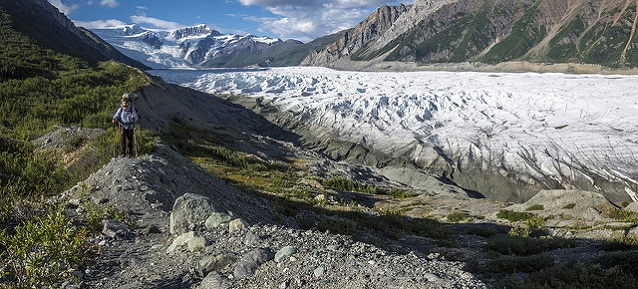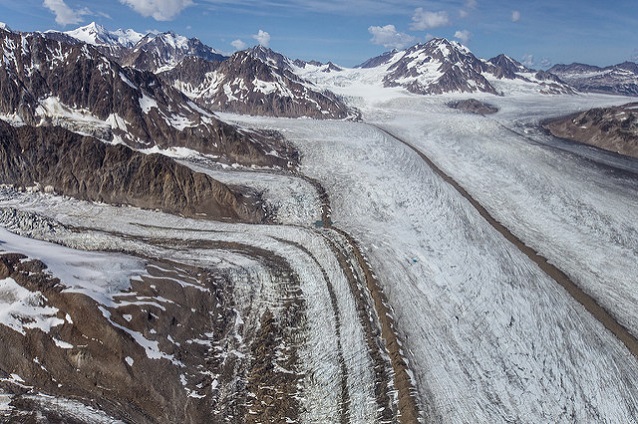Lateral and medial moraines consist of glacially-transported rock and debris. They form on the sides of glaciers (lateral moraines) or at the boundary between two tributary glaciers (medial moraines). Either way, they often mark the edges of an ice body.
Lateral Moraines

NPS Photo/James W. Frank
Lateral moraines are sharp-crested piles of glacially-transported rocks and debris that are dropped by the ice as it melts. They form only in the ablation zone of a glacier (where more ice is melting than is accumulating as snow each year). This makes them good indicators of where the line between the accumulation zone and the ablation zone—the equilibrium line—occurred on past glaciers. They often remain on the landscape long after glacier retreat and are frequently contiguous with terminal moraines.
Medial Moraines

NPS Photo/James W. Frank
Medial moraines form where two tributary glaciers come together. They are generally surficial features on the ice and often consist of rock that has fallen from a rockwall where the glaciers converge. Because they are thin, surficial features, medial moraines are rarely preserved after the ice retreats.
To learn more about glaciers, glacier features, and glacial landforms, see the Glaciers & Glacial Landforms Page.
Part of a series of articles titled Glacier Landforms.
Previous: Nunataks, Arêtes, and Horns
Last updated: February 9, 2018
